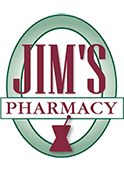© 2020-2021 Jim's Pharmacy & Home Health | All Rights Reserved








https://www.cdc.gov/
https://www.heart.org/en/
https://en.wikipedia.org/wiki/





424 East Second Street
Port Angeles, WA 98362
(360) 452-4200